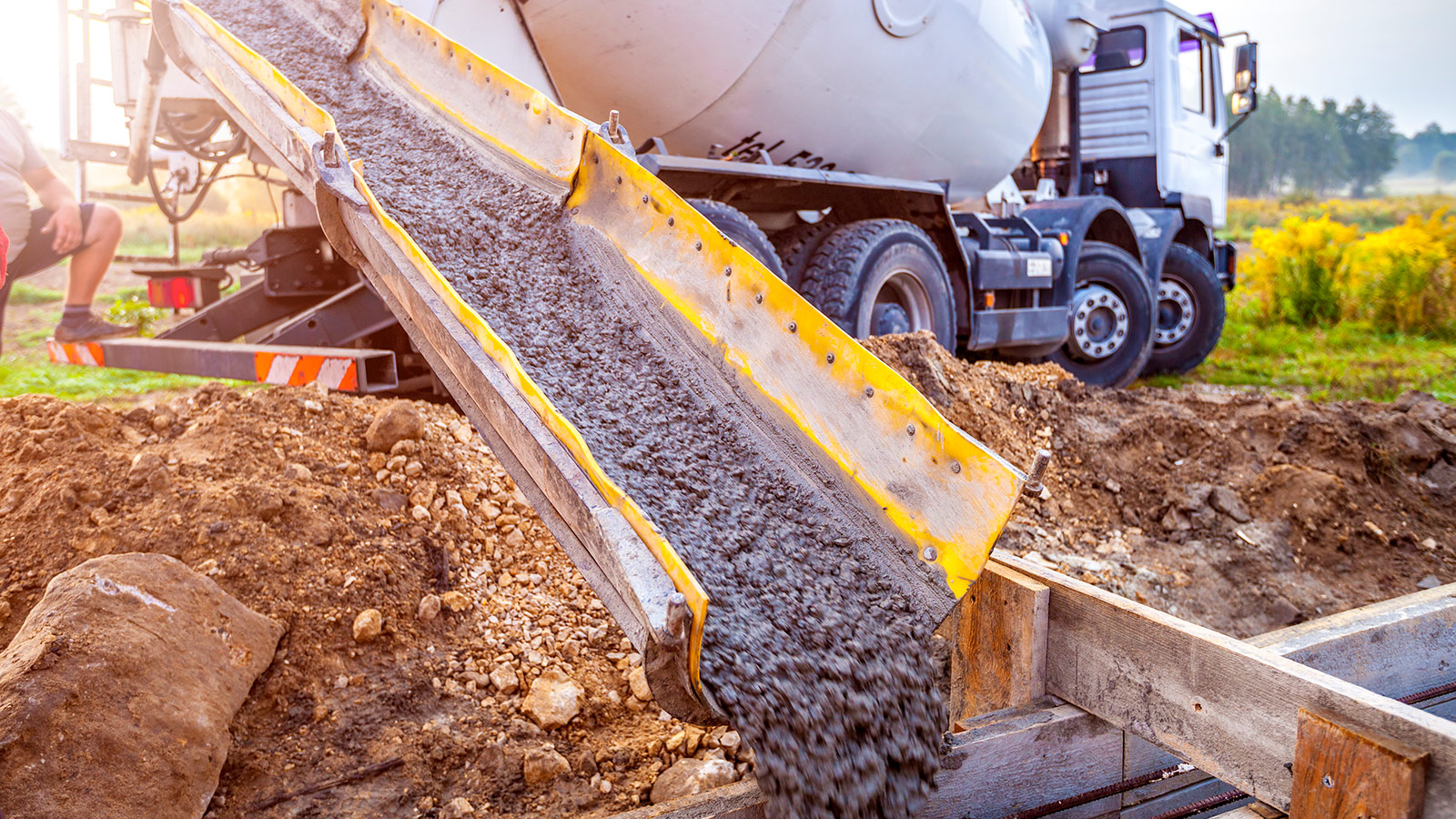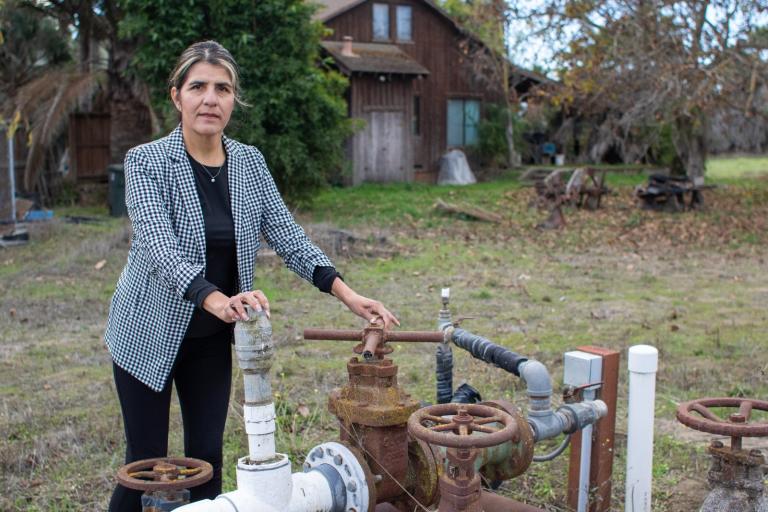The biggest carbon polluters don’t always advertise that fact loudly. In fact, one of the industries with the worst climate impact is all but ignored, even though its product literally supports our existence. I’m talking about the cement industry, which dumps more than 2 billion tons of carbon into the air each year to make its ubiquitous building material, roughly three times as much as the aviation industry.
What accounts for that jaw-dropping carbon footprint? To make cement, you have to heat limestone to nearly 1,500 degrees C. Unfortunately, the most efficient way to get a cement kiln that hot is to burn lots of coal, which, along with other fossil fuel energy sources, accounts for 40 percent of the industry’s emissions. Eventually, the limestone breaks down into calcium oxide (also known as lime) and releases CO2, which goes straight into the atmosphere, accounting for a further 60 percent of the industry’s emissions.
The good news is that there’s no shortage of ideas for how to slim down cement’s weighty carbon footprint. The bad news is that most of them are either in their infancy or face significant barriers to adoption. As our window of time for preventing catastrophic climate change grows ever smaller, we need major investments in new technologies and changes to how the cement industry works. But most of all, we need politicians need to wake up to the fact that the cement industry has a climate problem. It’s time for some concrete solutions.
Making cement green
One of the most straightforward ways of putting a dent in cement’s carbon emissions would be to find cleaner-burning fuels that are capable of heating a cement kiln. Some alternatives to fossil fuels are available today, like wood, agricultural waste, and even car tires. Despite how that last one sounds, Jeremy Gregory, executive director of the Concrete Sustainability Hub at MIT, says spent tires can be a “great source of energy,” and cement kilns are one of the most effective ways to dispose of them.
In the future, we might have much cleaner options. A draft report published in October outlined some emerging technologies for generating the industrial heat needed to make cement, including using hydrogen-based fuels or electric heaters that run on renewable power. These methods aren’t ready for prime time yet, but with further development, tire fires to keep the cement kilns cooking might become a quaint footnote in history.
Even if we find the perfect carbon-free alternative to coal, though, that only solves part of cement’s problem. There’s still the CO2 released while limestone is being turned into lime. That lime reacts with clay inside the kiln to form a substance known as “clinker,” which is then mixed with small amounts of gypsum and ground into a powder called “ordinary portland cement,” the industry standard. Portland cement goes on to get blended with water, sand, and gravel to form concrete, the rocky material used to make building foundations, roads, dams, and many more of the greatest hits of modern infrastructure.
What if manufacturers could reduce the amount of clinker needed to make cement? Then they wouldn’t have to cook so much limestone in the first place, and the process would emit less carbon. The cement industry as a whole has already reduced the clinker fraction of its product from more than 90 percent in 1990 to closer to 65 percent today by adding substitute ingredients, like byproducts from coal-burning plants and iron and steel smelting, to the recipe. But there’s even more room for improvement with new formulations being cooked up by R&D laboratories, startups, and major companies.
One particularly promising recipe is limestone calcined clay cement, known more pithily as LC3. Developed about five years back at the EFPL research institute in Switzerland, LC3 is a formula in which the clinker is cut almost in half by adding calcinite clays and limestone, both of which are cheap and often abundant. LC3 cement can also be cooked at much lower temperatures. Taken together, these two benefits are estimated to shave up to 30 percent off its carbon footprint compared with portland cement. The recipe has already been commercialized but is not yet being adopted at a large scale due to a host of barriers including inflexible industry standards and concerns over how new blends will hold up long-term.
Even better than a low-carbon cement would be one that sucks carbon from the air. Today, most cement powders are hardened, or “cured,” by adding water, but several companies, most notably New Jersey-based Solidia, are creating cements that need to absorb CO2 in order to harden. Solidia claims that every metric ton of cement it makes can absorb 240 kilograms of the climate-warming gases. And because the CO2 is being packed into artificial rock, the storage is effectively permanent.
So far, “carbon-cured” cements are a niche product. They tend to be more expensive than traditional cement, and they often require a special CO2-enriched atmosphere in order to solidify. Still, Ella Adlen, a researcher at the Oxford Martin School, sees this technology as a “huge opportunity.” Earlier this month, Adlen co-authored a review paper in Nature that found that with further refinement of carbon curing and a massive scale-up, the technology might help offset over a billion tons of cement industry carbon emissions a year by 2050.
There’s one final tool that will likely be necessary to get cement plants all the way to zero-carbon: carbon capture, utilization, and storage (CCUS), a suite of technologies for sucking CO2 of a plant’s waste gas stream and piping it into some kind of storage vessel. Maybe that’s your new artisanal vodka — or perhaps the greenhouse gas could be used to make a carbon-cured cement. Small-scale demonstrations of CCUS are in the works at cement plants in Belgium and Norway, and in September, Dalmia Cement announced its plans to build the largest carbon capture cement facility on the planet in Tamil Nadu, India. When this facility comes online, it should be able to suck down half a million tons of CO2 a year.
A problem of scale
Developing new cement manufacturing technologies is only half the battle against cement’s carbon emissions. The other half is finding ways to use less cement.
Today the world churns out 4 billion tons of cement every year, or about 1,200 pounds for every human being alive. As more people move into cities, developing countries modernize their infrastructure, and the world transitions to new energy systems, our appetite for cement is only expected to grow. By 2050, we could be cooking up close to 5 billion tons of cement a year.
“As with everything in climate change, the most salient aspect of the problem is its scale,” said Rebecca Dell, an industry strategist with ClimateWorks. “If cement were a niche material this wouldn’t be a problem.”
Addressing the problem might mean changing common construction practices. Dell said construction projects often pour more concrete than is necessary because it’s a cheap form of reinforcement that can be used to get a job done quickly. New construction techniques like 3D printing could go a long way toward minimizing this sort of waste. So could further digitalization of the construction process — for instance, using advanced computer models to determine exactly how much cement is needed for a building to meet its desired specifications.
We also need to design structures that last longer and can be more easily repurposed for new uses, said Jeremy Gregory, executive director of the concrete sustainability hub at MIT.
“When it comes to buildings, we don’t usually demolish them because they’re structurally failing,” Gregory said. “Usually we demolish them because they go out of style or aren’t needed.” The longer we can use old buildings, the fewer new ones we’ll have to build, and the less cement we’ll need to manufacture.
The potential climate benefits of using cement more shrewdly are significant. A 2018 report found that in the European Union, the building sector could shave off a third of its carbon footprint by 2050 if buildings were designed to use less material, last longer, and be more easily repurposed; if construction waste were reduced; and if more cement were recycled.
Accelerating change
Dell said she feels “very confident” we’ve got the technical know-how to slash the cement industry’s carbon emissions if we want to.
“The difficulty is much more around can we organize our policy and our markets so that doing it will be rewarded,” she said. “That’s actually much harder.”
The world of cement is dominated by a few major producers vying in a global commodity market that’s very sensitive to small price fluctuations. Any company that voluntarily decides to switch up its cement-making process is taking on a huge risk: It could wind up with a product of inferior quality, or one that’s too expensive to sell. Perhaps it’s no surprise, then, that most companies aren’t trying very hard.
A report published last year by the Transition Pathway Initiative looked at 21 of the world’s largest cement producers and found that fewer than half had set any emissions targets. Of the 11 companies that reported some emissions data for multiple years, only two appeared to be cutting carbon fast enough to stay in line with the Paris Agreement goal of limiting global warming to 2 degrees C.
For this calcified industry to change, interventions are needed at the national and international level. Governments could create regulations that mandate new efficiency standards for cement plants and reward companies that take things a step further, for instance through incentives like the U.S.’s 45Q tax credit for carbon capture. They could help create new markets for clean cement by setting up procurement standards like the Buy Clean California Act, which places limits on the climate impact of certain building materials the state is allowed to purchase. And the governments of wealthy countries like the United States could invest considerably more in developing the next generation of clean cement technologies and bringing those technologies to market.
Washington is slowly recognizing the need for action. Back in September, two separate Congressional committees held hearings on industrial decarbonization. Gregory testified at both, and he said he received “a lot of great questions from both sides of the aisle.” Cement policy has even made a few fleeting appearances in 2020 presidential campaign platforms, most notably former climate candidate Jay Inslee’s evergreen economy plan. Among other things, that plan called for a federal “Buy Clean” program for cement and other building materials, stronger tax incentives for plants using carbon capture, and a brand-new Office of Industrial Decarbonization at the Department of Energy. Democratic candidates Andrew Yang and Pete Buttigieg, meanwhile, both call for additional federal funding for research aimed at figuring out ways to store carbon in concrete or cement.
“When people think about climate action, the first thing they think about is renewable electricity. The second thing is passenger transportation,” said Dell. “The conversation around these industrial emissions sources is nowhere near as mature. But we’re working on it.”


